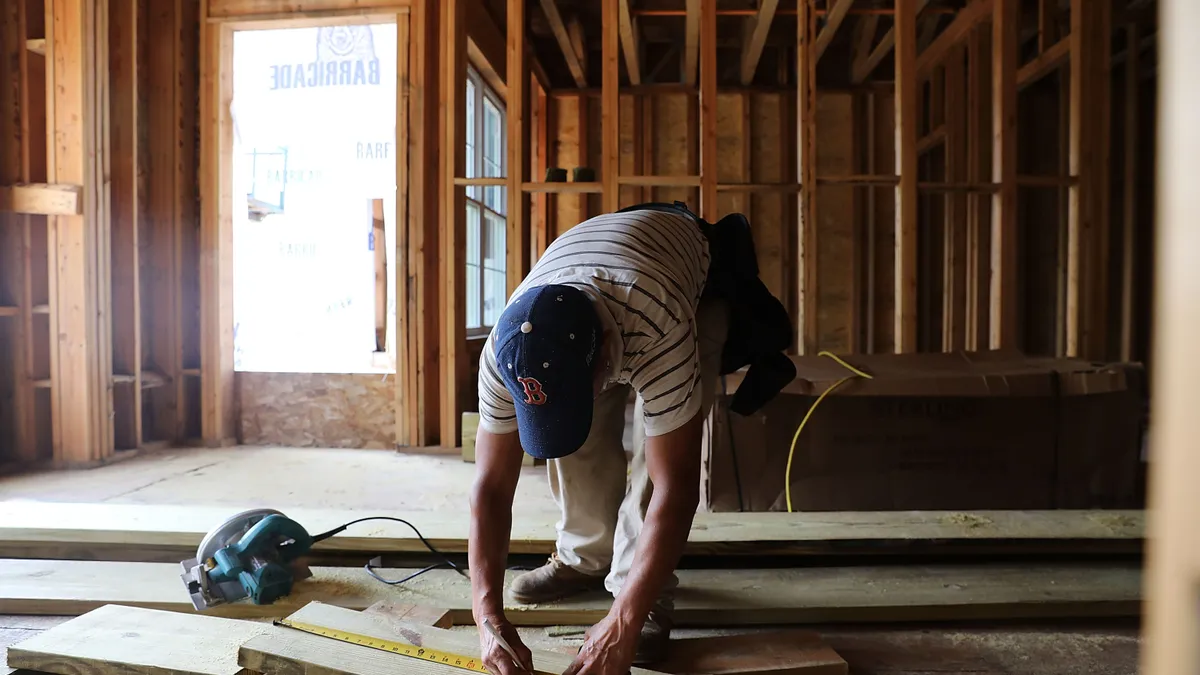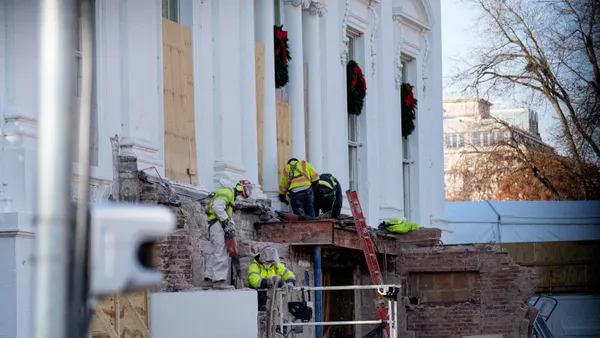Dive Brief:
- The Occupational Health and Safety Administration is asking employers to submit input on a forthcoming heat standard, the agency announced last week.
- The advanced notice of proposed rulemaking initiates a two-month-long comment period.
- OSHA said it is looking for "diverse perspectives and expertise" on topics such as heat-stress thresholds, heat-acclimatization planning and exposure monitoring.
Dive Insight:
Currently, OSHA lacks a specific standard for hazardous heat conditions; the advanced notice of proposed rulemaking begins the process to consider a heat-specific workplace rule.
"While heat illness is largely preventable and commonly underreported, thousands of workers are sickened each year by workplace heat exposure, and in some cases, heat exposure can be fatal," said Acting Assistant Secretary of Labor for Occupational Safety and Health Jim Frederick.
Heat is the leading cause of death among all weather-related workplace hazards, according to OSHA. In 2019, 43 workers died from heat illness, and at least 2,410 others suffered serious injuries and illnesses.
"As we continue to see temperatures rise and records broken, our changing climate affects millions of America's workers who are exposed to tough and potentially dangerous heat," said U.S. Department of Labor Secretary Marty Walsh.
The White House's September announcement about its plans to pursue a possible heat standard followed a summer that saw scorching heat waves. Regions that are not known for blistering climates faced problems related to heat and illness; a construction worker in Oregon died of heat-related illness after a June heat wave pushed temperatures in the Pacific Northwest to as high as 116°F, according to Construction Dive.
Walsh pointed out that a disproportionate number of people of color are impacted by the lack of heat protections.
"We must act now to address the impacts of extreme heat and to prevent workers from suffering the agony of heat illness or death," he said.
Among other inquiries, OSHA asked employers to answer to the following questions:
- What are current and best practices for protecting workers in various types of work arrangements, including temporary and multi-employer work arrangements, from hazardous heat exposure?
- Are OSHA's existing efforts and authorities adequate or effective in protecting workers from hazardous heat in indoor and outdoor work settings?
- What regional differences should be considered or accounted for when determining appropriate interventions?
- Are there industries or employers addressing occupational heat-related illness with an environmental justice approach ( i.e., with a focus on fair treatment and meaningful involvement of all people regardless of race, color, national origin, or income) to appropriately address the disproportionate exposures and outcomes faced by workers of color, low-wage workers, immigrant workers or pregnant workers?
- How should climate change be factored into an OSHA heat illness and injury prevention standard?
- What are the limitations associated with implementing water, rest, and shade effectively in indoor and outdoor work settings?
- How do organizations in both indoor and outdoor work environments currently deal with heat-illness emergencies if they arise?
Stakeholders may submit comments through Dec. 27.
















